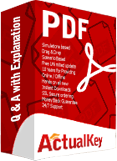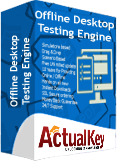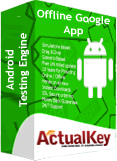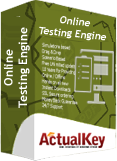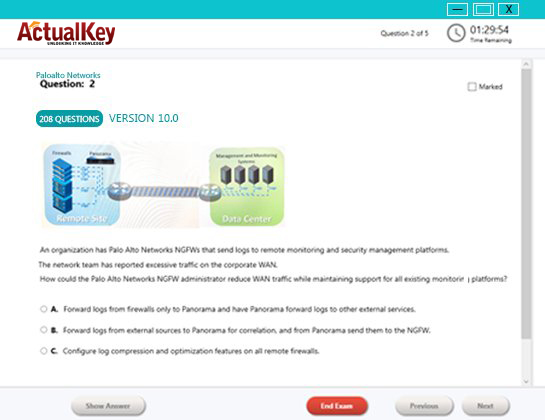Limited Time 30% Discount Offer Use Code - off30
Actualkey Prepration Latest PL-100 : Microsoft Power Platform App Maker Exam Questions and Answers PDF's, Verified Answers via Experts - Pass Your Exam For Sure and instant Downloads - "Money Back Guarantee".
| Vendor | Microsoft |
| Certification | Microsoft Certified: Power Platform App Maker Associate |
| Exam Code | PL-100 |
| Title | Microsoft Power Platform App Maker Exam |
| No Of Questions | 278 |
| Last Updated | November 8,2024 |
| Product Type | Q & A with Explanation |
| Bundel Pack Included | PDF + Offline / Andriod Testing Engine and Simulator |
Skills Measured
Audience profile
The candidate envisions and creates business solutions to simplify and automate tasks and processes for themselves and their team. They understand the data that they are working with, the issues that they need to resolve, and the required processes and app experiences. The candidate may not have formal IT training but is comfortable using technology to solve business problems.
The candidate is self-directed and focuses on solving problems that they encounter as part of their primary job role. They may connect to and use features of apps including Microsoft Power Platform, Microsoft Teams, Microsoft 365 apps and services, and third-party solutions. The candidate has a desire to understand the capabilities and limitations of available tools and understand how to apply them.
Design business solutions (20–25%)
Analyze and visualize data (10–15%)
Create business solutions (60–65%)
Design business solutions (20–25%)
Create a high-level design
Identify existing data sources needed to support a business solution
Describe the expected user experience for targeted devices and describe the differences between Microsoft Power Platform app types
Describe the expected logic and steps that a process will execute
Create a high-level structure for a new data source
Identify Microsoft Power Platform components
Determine the required Microsoft Power Apps app type for a business solution
Determine when to use Microsoft Dataverse for Teams
Map a problem domain to Microsoft Power Platform tools
Identify options for implementing business logic
Describe connectors
Describe uses cases for cloud flows and desktop flows
Describe use cases for chatbots
Design the user interface (UI) for a business solution
Identify opportunities for component reuse
Select UI elements for canvas apps
Identify the model-driven forms and Dataverse views that are needed
Design reporting and visualizations for business solutions
Select reporting options for business solutions including views, Microsoft Power BI visualizations, and dashboards
Define visualizations for Power BI dashboards
Define visualizations for model-driven dashboards
Define visualizations for canvas apps
Analyze and visualize data (10–15%)
Create and consume Power BI dashboards
Create a simple report from an existing dataset by using Power BI Service
Create Power BI dashboards from existing reports
Embed Power BI dashboards and tiles in canvas apps and model-driven apps
Share Power BI dashboards
Describe AI Builder models
Describe use cases for AI Builder
Describe differences between prebuilt models and custom models
Describe the process for training custom models
Use a model from within Microsoft Power Automate or Microsoft Power Apps
Create business solutions (60–65%)
Manage Microsoft Power Platform components during development
Create a publisher in Dataverse
Create a Dataverse solution
Export or import Dataverse solution
Export or import a canvas app or a cloud flow
Add existing apps and flows to a Dataverse solution
Create model-driven apps
Create model-driven apps
Create and configure Dataverse table forms
Create and configure Dataverse table views
Share model-driven apps with other users and groups
Create and configure model-driven dashboards
Create and manage canvas apps
Connect to data sources in canvas apps
Interpret App checker results
Manage versions of canvas apps
Publish canvas apps
Share canvas apps with other users and groups
Build canvas apps screens
Add canvas app assets and components to screens
Create screens for canvas apps
Determine when to use forms, galleries, button, labels, input controls, images, and custom controls
Configure UI elements
Implement Power Fx formulas
Implement collections and variables
Run a cloud flow from a canvas app
Configure Microsoft Dataverse
Create tables and table columns based on a data model
Link tables by using lookups
Describe use cases and capabilities of business rules
Create Dataverse business rules
Describe how Dataverse uses role-based access control (RBAC)
Add table permissions to existing Dataverse security roles
Create Power Automate flows
Describe types of triggers for cloud flows
Create cloud flows
Configure triggers for cloud flows
Configure flow actions
Test a cloud flow and interpret flow checker results
Implement conditional logic for a cloud flow
Create approvals and monitor the approval process by using Power Automate and Teams
Share cloud flows
Create a desktop flow for personal use
Create Microsoft Power Virtual Agents chatbots in Microsoft Teams
Identify use cases and capabilities for chatbots
Create a chatbot that uses topics and trigger phrases
Test a chatbot
Publish a chatbot
Sample Questions and Answeers
New Topic: Topic 1, Wide World Importers
This is a case study. Case studies are not timed separately. You can use as much exam time as you
would like to complete each case. However, there may be additional case studies and sections on
this exam. You must manage your time to ensure that you are able to complete all questions included
on this exam in the time provided.
To answer the questions included in a case study, you will need to reference information that is
provided in the case study. Case studies might contain exhibits and other resources that provide
more information about the scenario that is described in the case study. Each question is
independent of the other questions in this case study.
At the end of this case study, a review screen will appear. This screen allows you to review your
answers and to make changes before you move to the next section of the exam. After you begin a
new section, you cannot return to this section.
To start the case study
To display the first question in this case study, click the Next button. Use the buttons in the left pane
to explore the content of the case study before you answer the questions. Clicking these buttons
displays information such as business requirements, existing environment, and problem statements.
When you are ready to answer a question, click the Question button to return to the question.
Background
Current environment
Sales representatives submit weekly status reports to regional managers. There is no standardized
format for these status reports. The process for managing status reports is challenging.
Wide World Importers has decided to use Microsoft 365, Microsoft Azure, and Power Platform for
future app development. Both Wide World Importers and Tailwind Traders have identical Microsoft
SharePoint and Azure configurations. Both companies use separate tenants.
Requirements
Application
You must create a mobile app to streamline the creation of status reports by sales representatives.
You must make the same app available to Tailwind Traders. The mobile app must meet the following requirements:
Minimize the use of code.
Use formulas and expressions when necessary.
Support a variety of visual layouts.
Use a SharePoint list to store information about regional managers and sales representatives.
Use Azure SQL Database to store other data.
Status reports
Sales representatives must provide a weekly status report for all work processes each Monday.
Representatives must enter the following information for each process:
If a sales representative submits a status report and assigns the At Risk status to a process, the app
must prompt the sales representative to enter a detailed description for the risk. This information
must be emailed to the regional manager. If the category is Work/life balance, the information must
be carbon copied to the human resources department.
If a sales representative does not submit a weekly status report by an agreed upon deadline, the
system must send an email to remind the sales representative.
The app must be able to run both online and offline. If the mobile device on which the app runs is
connected to the internet, the app must immediately submit the status report.
You must display a visual indicator in the app so that sales representatives know whether the app is
offline before submitting reports.
When data is submitted offline, the data must be stored in the app until the app is back online.
Technical
Regardless of the UI layouts, the data recorded must be standardized in the Azure DB tables. You
must use global variables in the app.
Deployment
Before deploying the app to production, you must ensure that the app conforms to Microsoft
accessibility and performance guidelines.
The completed app and all supporting components must be provided to Tailwind Traders.
Tailwind Traders must not be able to make changes to any of the components.
You must use the following version control numbering scheme:
Major: The last two digits of the year the app is packaged
Minor: Two digits that represent the month when the app is packaged
Build: A number that is incremented to represent significant changes to the app
Revision: The incremented revision for a package
New versions of the application must completely replace previous versions of the app.
When identifying versions of the app solution, all dependencies, entities, and user interfaces
components must be identified to avoid any unintentional issues caused by reverting individual
components to a previous version.
Previous versions of the mobile app must be available for roll back purposes.
All versions of software that have been used in production must be retained for five years.
Issues
The mobile app has been live for several months. Eight versions of the app have been released since
the initial version of the app was deployed to sales representatives. You must revert the app to an
earlier version and redesign some features.
User1 often works in a warehouse that does not have internet connectivity. User1 needs to edit an
existing status report and submit a new status report.
Several sales representatives have accessibility restrictions. User2 is visually impaired and cannot see
images. User3 is unable to use a mouse.
QUESTION 1
You need to provide the app to Tailwind Traders.
What should you do?
A. Within Managed Properties, set the value of the Allow customizations option to true. Export the app as a managed solution.
B. Use the Share App feature.
C. Within Managed Properties, set the value of the Allow customizations option to false. Export the app as a managed solution.
D. Within Managed Properties, set the value of the Allow customizations option to false. Export the app as an unmanaged solution.
Answer: C
Explanation:
Scenario: The completed app and all supporting components must be provided to Tailwind Traders.
Tailwind Traders must not be able to make changes to any of the components.
Managed Solution: A managed solution is a finalized solution that can be distributed and installed.
They are created by exporting an unmanaged solution by setting restrictions to prevent any further
customizations. The whole point of Managed is locking down the Component states so they cannot
be edited. Deleting the Managed Solution will remove all its customisations as well as data
contained. Managed Solutions become read only once deployed so they cannot be manipulated.
QUESTION 6
You need to provide all app components of the application to Tailwind Traders.
What should you do?
A. Package the application and flow components into a single solution for export.
B. Run the app checker and flow checker prior to publishing each component for export.
C. Export each component separately but use the same version number for each component.
D. Publish the application and flow solutions at the same time before exporting each one.
Answer: B
Explanation:
Scenario: When identifying versions of the app solution, all dependencies, entities, and user
interfaces components must be identified to avoid any unintentional issues caused by reverting
individual components to a previous version.
Power Apps has added components to the rule set that encourages best practices in the Power Apps
Checker. You can check your canvas apps and flows that are included in solutions and then review all
issues in a single, consolidated report.
QUESTION 8
You need to meet the requirements for sales representative that submit status reports.
How should you configure the flow?
A. Add a parallel branch that uses the value of a dynamic content variable
B. Add a number functions action that evaluates the risk value by using a static variable to determine if an email is required
C. Add a condition that evaluates the risk value by using a dynamic content variable
D. Add a data operation action that evaluates a dynamic content variable
Answer: C
Explanation:
Salespeople often do not set status of RFQs in the Sales Log to Won when a sale is closed and the
customer purchase order is received.
Include a dashboard that shows all currently active quotes, their status in the sales cycle, the
probability of closing, and estimated manufacturing and installation dates, by customer, product
division, status, and salesperson.
QUESTION 10
You need to create the mobile app.
Which type of app should you create?
A. model-driven app
B. portal app
C. Microsoft 365 web app
D. canvas app
Answer: D
Explanation:
An accessible canvas app will allow users with vision, hearing, and other impairments to successfully
use the app. In addition to being a requirement for many governments and organizations, following
the below guidelines increases usability for all users, regardless of their abilities.
I Got My Success Due To Actualkey PL-100 Bundle Pack Actualkey experts I got passed in the PL-100 exam without any worries at all, these exam material products gave me the reason to relax.
Budi Saptarmat
Yahoo! Got Successfully Through The PL-100 Exam Passing Exam is not a easy thanks to Acutalkey.com for providing me actual PL-100 Microsoft Power Platform App Maker Exam training with there included the Offline and Android simulators helps me success
Melinda
PL-100 Exam Best Preparation I have been preparing for PL-100 Microsoft Power Platform App Maker Exam, I was not sure that I'll be able to pass because of the fact that I am not a good student however;Actualkey.com provided me best and simple exam training pdf's and I passed. I now recommend everyone
Antonio Moreno
Actualkey.com PL-100 Offline Simulator is Best My choice to select Actualkey.com and go for the preparation PL-100 Microsoft Power Platform App Maker Exam, because I got the short way with the easy way
Liliane Meichner
Actualkey.com PL-100 Exam PDF"s passed with in a week PL-100 exam pdf's that's amazing
James Wilson
Microsoft - RELATED EXAMS
Designing a Database Server Infrastructure by Using Microsoft SQL Server 2005
Questions: 92 Questions | September 16, 2024
Optimizing and Maintaining a Database Administration Solution by Using SQL Server 2005
Questions: 215 | September 16, 2024
UPGRADE: MCDBA Skills to MCITP Database Administrator by Using Microsoft SQL Server 2005
Questions: 186 Questions | September 16, 2024
Microsoft .NET Framework 2.0 - Windows-Based Client Development
Questions: 245 Questions | September 16, 2024
Microsoft .NET Framework 2.0 - Distributed Application Development
Questions: 144 | September 16, 2024
Microsoft .NET Framework 2.0-Application Development Foundation
Questions: 456 | September 16, 2024
Designing and Developing Web-Based Applications by Using the Microsoft .NET Framework
Questions: 74 | September 16, 2024
Designing and Developing Windows-Based Applications by Using the Microsoft .NET Framework
Questions: 72 Questions | September 16, 2024
Designing and Developing Enterprise Applications by Using the Microsoft .NET Framework
Questions: 86 | September 16, 2024
UPGRADE: MCAD Skills to MCPD Web Developer by Using the Microsoft .NET Framework
Questions: 584 | September 16, 2024
UPGRADE: MCAD Skills to MCPD Windows Developer by Using the Microsoft .NET Framework
Questions: 559 | September 16, 2024
UPGRADE: MCSD Microsoft .NET Skills to MCPD Enterprise Application Developer: Part 1
Questions: 609 | September 16, 2024
UPGRADE: MCSD Microsoft .NET Skills to MCPD Enterprise Application Developer: Part 2
Questions: 168 | September 16, 2024
TS: Deploying and Maintaining Windows Vista Client and 2007 Microsoft Office System Desktops
Questions: 92 | September 16, 2024
Windows Server 2008 Applications Infrastructure, Configuring
Questions: 494 | September 16, 2024
TS: Upgrading from Windows Server 2003 MCSA to, Windows Server 2008, Technology Specializations
Questions: 576 | September 16, 2024
Designing a Microsoft Office Enterprise Project Management (EPM) Solution
Questions: 50 Questions | September 16, 2024
Customizing Portal Solutions with Microsoft SharePoint Products and Technologies
Questions: 75 | September 16, 2024
Deploying Business Desktops with Microsoft Windows Server 2003 and Microsoft Office 2003
Questions: 53 | September 16, 2024
Implementing and Administering Security in a Microsoft Windows Server 2003 Network
Questions: 288 | September 16, 2024
Designing, Deploying, and Managing a Network Solution for a Small- and Medium-Sized Business
Questions: 204 | September 16, 2024
Supporting Users and Troubleshooting a Microsoft Windows XP Operating System
Questions: 114 | September 16, 2024
TS: Microsoft SQL Server 2008, Business Intelligence Development and Maintenance
Questions: 399 | September 16, 2024
PRO: Designing, Optimizing and Maintaining a Database Administrative Solution Using Microsoft SQL Server 2008
Questions: 189 | September 16, 2024
Developing E-Business Solutions Using Microsoft BizTalk Server 2004
Questions: 40 | September 16, 2024
Developing Microsoft Office Solutions Using XML with Office Professional Edition 2003
Questions: 50 | September 16, 2024
Planning and Building a Messaging and Collaboration Environment Using Microsoft Office System and Microsoft Windows Server 2003
Questions: 61 | September 16, 2024
TS: Microsoft .NET Framework 3.5, ADO.NET Application Development
Questions: 287 | September 16, 2024
TS: Microsoft .NET Framework 3.5, ASP.NET Application Development
Questions: 364 | September 16, 2024
TS: Microsoft Office Project Server 2007, Managing Projects
Questions: 145 | September 16, 2024
TS: Microsoft .NET Framework 3.5, Windows Forms Application Development
Questions: 48 | September 16, 2024
Upgrade: Transition Your MCITP SQL Server 2005 DBA to MCITP SQL Server 2008
Questions: 98 | September 16, 2024
Pro: Designing and Deploying Messaging Solutions with Microsoft Exchange Server 2010
Questions: 379 | July 1, 2024
Pro: Designing and Developing ASP.NET Applications Using the Microsoft .NET Framework 3.5
Questions: 281 | September 16, 2024
TS: Microsoft SQL Server 2008, Implementation and Maintenance
Questions: 328 | September 16, 2024
Microsoft System Center Configuration Manager 2007,Configuring
Questions: 184 | September 16, 2024
PRO: Designing and Developing Microsoft SharePoint 2010 Applications
Questions: 200 | September 16, 2024
Upgrading to Windows 7 MCITP Enterprise Desktop Support Technician
Questions: 50 | September 16, 2024
TS: Windows Applications Development with Microsoft .NET Framework 4
Questions: 278 | September 16, 2024
TS: Windows Communication Foundation Development with Microsoft .NET Framework 4
Questions: 473 | September 16, 2024
TS: Web Applications Development with Microsoft .NET Framework 4
Questions: 405 | September 16, 2024
Pro: Designing and Developing Web Applications Using Microsoft .NET Framework 4
Questions: 288 | September 16, 2024
TS: Developing Business Process and Integration Solutions by Using Microsoft BizTalk Server 2010
Questions: 100 | September 16, 2024
Designing and Providing Microsoft Volume Licensing Solutions to Small and Medium Organizations
Questions: 232 | September 16, 2024
TS: Forefront Protection for Endpoints and Applications, Configuring
Questions: 105 | September 16, 2024
Upgrade: Transition Your MCITP SQL Server 2005 DBD to MCITP SQL Server 2008 DBD
Questions: 154 | July 1, 2024
Pro: Windows Server 2008 R2, Virtualization Administrator
Questions: 176 | September 16, 2024
PRO: Designing Database Solutions and Data Access Using Microsoft SQL Server 2008
Questions: 183 | July 1, 2024
Managing and Maintaining a Microsoft Windows Server 2003 Environment
Questions: 450 | July 1, 2024
Implementing Data Models and Reports with Microsoft SQL Server 2012
Questions: 330 | July 1, 2024
Implementing a Data Warehouse with Microsoft SQL Server 2012
Questions: 322 | September 16, 2024
Transition Your MCTS on SQL Server 2008 to MCSA: SQL Server 2012, Part 2
Questions: 300 | September 16, 2024
Configuring and Deploying a Private Cloud with System Center 2012
Questions: 462 | September 16, 2024
Monitoring and Operating a Private Cloud with System Center 2012
Questions: 457 | September 16, 2024
Administering and Deploying System Center 2012 Configuration Manager
Questions: 208 | September 16, 2024
Microsoft Dynamics AX 2012 Process Manufacturing Production and Logistics
Questions: 149 | July 1, 2024
Advanced Metro style App Development using HTML5 and JavaScript
Questions: 225 | September 16, 2024
Transition Your MCTS on SQL Server 2008 to MCSA: SQL Server 2012, Part 1
Questions: 230 | September 16, 2024
Transition Your MCITP: Database Administrator 2008 or MCITP: Database Developer 2008 to MCSE: Data Platform
Questions: 261 | September 16, 2024
Transition Your MCITP: Business Intelligence Developer 2008 to MCSE: Business Intelligence
Questions: 132 | September 16, 2024
Designing Database Solutions for Microsoft SQL Server 2012
Questions: 231 | September 16, 2024
Designing Business Intelligence Solutions with Microsoft SQL Server 2012 Exam
Questions: 314 | September 16, 2024
Microsoft Programming in HTML5 with JavaScript and CSS3 Exam
Questions: 342 | September 16, 2024
Delivering Continuous Value with Visual Studio 2012 Application Lifecycle Management
Questions: 219 | July 1, 2024
Enterprise Voice & Online Services with Microsoft Lync Server 2013
Questions: 158 | September 16, 2024
Developing Microsoft SharePoint Server 2013 Core Solutions
Questions: 181 | September 16, 2024
Upgrade your MCPD: Web Developer 4 to MCSD: Web Applications
Questions: 229 | September 16, 2024
Essentials of Developing Windows Metro style Apps using C#
Questions: 168 | September 16, 2024
Server Virtualization with Windows Server Hyper-V and System Center
Questions: 149 | September 16, 2024
Essentials of Developing Windows Metro style Apps using HTML5 and JavaScript
Questions: 166 | September 16, 2024
TS: Windows Small Business Server 2011 Standard, Configuring
Questions: 55 | September 16, 2024
TS: MS Internet Security & Acceleration Server 2006, Configuring
Questions: 80 | September 16, 2024
TS: Microsoft System Center Operations Manager 2007, Configuring
Questions: 94 | September 16, 2024
TS: System Center Virtual Machine Manager 2008, Configuring
Questions: 45 | September 16, 2024
PRO: Designing a Business Intelligence Infrastructure Using Microsoft SQL Server 2008
Questions: 115 | September 16, 2024
Upgrade: Transition Your MCITP SQL Server 2005 BI Developer to MCITP SQL Server 2008 BI Developer
Questions: 203 | September 16, 2024
Recertification for MCSD: Application Lifecycle Management
Questions: 292 | September 16, 2024
TS: Microsoft .NET Framework 3.5 Windows Presentation Foundation Application Development
Questions: 101 | September 16, 2024
TS: Microsoft .NET Framework 3.5 - Windows Communication Foundation
Questions: 270 | September 16, 2024
TS: Visual Studio Team Foundation Server 2010, Administration
Questions: 72 | September 16, 2024
Pro: Designing and Developing Windows Applications Using Microsoft .NET Framework 4
Questions: 239 | September 16, 2024
TS: Microsoft Windows SharePoint Services 3.0 Application Development
Questions: 109 | September 16, 2024
Upgrade: Transition your MCPD Enterprise Application Developer Skills to MCPD Enterprise Application Developer 3.5, Part 1
Questions: 153 | September 16, 2024
UPGRADE: Transition your MCPD Enterprise Application Developer Skills to MCPD Enterprise Application Developer 3.5, Part 2
Questions: 123 | September 16, 2024
TS: System Center Data Protection Manager 2007, Configuring
Questions: 74 | September 16, 2024
Designing and Providing Microsoft Volume Licensing Solutions to Large Organizations
Questions: 126 | September 16, 2024
TS: Designing, Assessing, and Optimizing Software Asset Management (SAM)
Questions: 85 | September 16, 2024
MS Office Communication Server 2007-U.C Voice Specialization
Questions: 174 | September 16, 2024
Microsoft Office Communications Server 2007 R2 U.C. Voice Specialization
Questions: 101 | September 16, 2024
Windows Server 2008 Hosted Environments, Configuring and Managing
Questions: 75 | September 16, 2024
Designing and Providing Microsoft Volume Licensing Solutions to Large Organisations
Questions: 104 | September 16, 2024
Pro: Designing and Developing Windows Applications Using the Microsoft .NET Framework 3.5
Questions: 105 | July 1, 2024
Pro: Designing and Developing Enterprise Applications Using the Microsoft .NET Framework 3.5
Questions: 152 | September 16, 2024
Universal Windows Platform – App Data, Services, and Coding Patterns (beta)
Questions: 47 | September 16, 2024
Universal Windows Platform – App Architecture and UX/UI (beta)
Questions: 76 | September 16, 2024
Microsoft Dynamics AX 2012 R3 CU8 Installation and Configuration
Questions: 48 | July 1, 2024
Designing and Deploying Microsoft Exchange Server 2016 Exam
Questions: 166 | September 16, 2024
Introduction to Programming Using Block-Based Languages (Touch Develop)
Questions: 72 | July 1, 2024
Development, Extensions and Deployment for Microsoft Dynamics 365 for Finance and Operations
Questions: 90 | July 1, 2024
Financial Management in Microsoft Dynamics 365 for Finance and Operations
Questions: 73 | July 1, 2024
Designing and Providing Microsoft Licensing Solutions to Large Organizations
Questions: 195 | July 1, 2024
Distribution and Trade in Microsoft Dynamics 365 for Finance and Operations
Questions: 93 | July 1, 2024
Administering Microsoft System Center Configuration Manager and Cloud Services Integration
Questions: 150 | July 1, 2024
Microsoft Configuring and Operating a Hybrid Cloud with Microsoft Azure Stack Exam
Questions: 99 | July 1, 2024
Microsoft Azure Solutions Architect Certification Transition Exam
Questions: 393 | July 1, 2024
Outlook 2016: Core Communication, Collaboration and Email Skills
Questions: 35 | July 1, 2024
Microsoft Developing Solutions for Microsoft Azure Exam
Questions: 170 / 6 Case Study | July 1, 2024
Designing and Implementing a Data Science Solution on Azure Exam
Questions: 506 | July 28, 2025
Microsoft 365 Teamwork Administrator Certification Transition Exam
Questions: 120 | July 1, 2024
Microsoft Messaging Administrator Certification Transition Exam
Questions: 155 | July 1, 2024
Microsoft Excel 2016: Core Data Analysis, Manipulation, and Presentation Exam
Questions: 35 | November 8, 2024
Microsoft Word 2016: Core Document Creation, Collaboration and Communication Exam
Questions: 35 | November 8, 2024
Microsoft Dynamics 365 for Finance and Operations, Supply Chain Management Exam
Questions: 394 | November 25, 2024
Microsoft Dynamics 365 for Finance and Operations, Manufacturing Exam
Questions: 207 | November 8, 2024
Building Applications and Solutions with Microsoft 365 Core Services Exam
Questions: 242 | July 1, 2024
Microsoft Dynamics 365: Finance and Operations Apps Solution Architect Exam
Questions: 322 | December 19, 2025
Planning and Administering Microsoft Azure for SAP Workloads Exam
Questions: 289 | August 22, 2025
Microsoft Dynamics 365: Finance and Operations Apps Developer Exam
Questions: 304 | September 22, 2025
Administering Relational Databases on Microsoft Azure (beta) Exam
Questions: 341 | December 13, 2024
Microsoft Dynamics 365 Business Central Functional Consultant (beta) Exam
Questions: 213 | September 18, 2025
Microsoft Power Platform Functional Consultant (beta) Exam
Questions: 293 | September 26, 2025
Configuring and Operating a Hybrid Cloud with Microsoft Azure Stack Hub Exam
Questions: 176 | July 1, 2024
Microsoft Dynamics 365 Fundamentals Customer Engagement Apps (CRM) (beta) Exam
Questions: 159 | October 12, 2024
Microsoft Dynamics 365 Fundamentals Finance and Operations Apps (ERP) Exam
Questions: 151 | May 27, 2025
Configuring and Operating Windows Virtual Desktop on Microsoft Azure Exam
Questions: 261 | July 30, 2025
Designing and Implementing a Microsoft Azure AI Solution (beta) Exam
Questions: 379 | August 7, 2025
Designing and Implementing Microsoft Azure Networking Solutions Exam
Questions: 294 | March 1, 2025
Designing Microsoft Azure Infrastructure Solutions (beta) Exam
Questions: 340 | October 10, 2025
Designing and Implementing Cloud-Native Applications Using Microsoft Azure Cosmos DB (beta) Exam
Questions: 144 | May 24, 2025
Configuring Windows Server Hybrid Advanced Services (beta) Exam
Questions: 255 | November 5, 2025
Administering Windows Server Hybrid Core Infrastructure (beta) Exam
Questions: 256 | September 30, 2025
Microsoft Designing and Implementing Enterprise-Scale Analytics Solutions Using Microsoft Azure and Microsoft Power BI Exam
Questions: 160 | July 1, 2024
Microsoft Dynamics 365 Supply Chain Management Functional Consultant Expert Exam
Questions: 195 | July 12, 2025
Implementing Analytics Solutions Using Microsoft Fabric Exam
Questions: 140 | August 16, 2025
Implementing Data Engineering Solutions Using Microsoft Fabric Exam
Questions: 104 | June 6, 2025
Exams code, certifications, vendor or keywords
![]()
Copyright © 2009 - 2026 Actualkey. All rights reserved.

